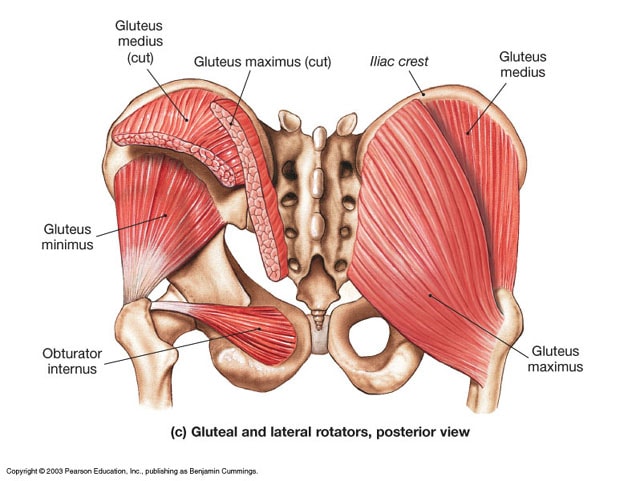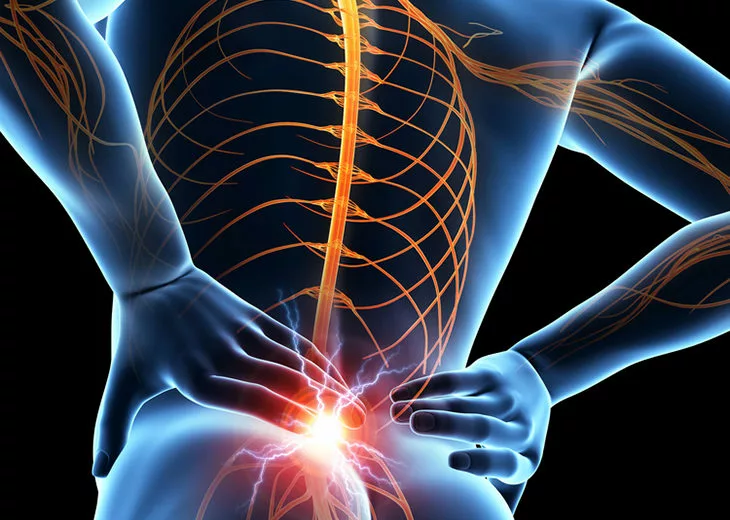Physical Therapist, Dr. Erin Weber breaks down the anatomy of the glutes, and the ways you can prevent future injuries by strengthening this muscle group with corrective exercises.
The powerhouse gluteal group consists of three muscles, the maximus, medius and minimus. They function to stabilize the lumbar spine and pelvis, and decrease load to the joints below (hips, knees, and ankles). Our gluteals are responsible for simple tasks including single-limb stance, and provide support for more dynamic activity like propelling us forward to complete grueling marathon mileage.
When these muscles are weak or injured, you can find problems at joints above and below.
Do you experience Achilles tendonitis, knee pain, or lower back pain?
It is likely that the gluteals on the painful side are weaker or inhibited. Part of our physical therapy evaluation includes looking at the functional strength of this muscle group, as well as observing their symmetry (yes, we are staring at your ass).
Take a look, are your gluteal clefts symmetric, is one side bigger? Most of us tend to have a stronger/more defined side, potentially leading to musculoskeletal issues on the weaker side.
How to relieve buttock muscle pain
Doing leg lifts and bridges are a nice way to isolate these muscles to start to strengthening, but you won’t get a Beyonce butt unless you start to use them functionally. Try to engage your gluteals with walking (squeeze your tush as your push-off your big toe when walking), fire from your “sit bones” when climbing stairs and squatting. Being more mindful of engaging the gluteals will promote better activation and foster support for your joints.
When it comes to walking, don’t just go through the motions. Pay attention to your glutes and consciously squeeze your tush as you push off your big toe with each step. This simple adjustment can activate your gluteal muscles and make your regular walks more effective for toning and strengthening your posterior. By consistently incorporating glute activation into your walking routine, you can alleviate pain in the glutes and surrounding areas, promoting better overall gluteal health and reducing the frequency of discomfort.
Similarly, when you encounter a flight of stairs, make it an opportunity to activate your glutes. Instead of relying solely on your quadriceps, focus on firing from your “sit bones” as you ascend each step. By consciously engaging your glutes, you can distribute the workload more evenly and enhance the activation of these muscles. This not only helps in building strength but also prevents and relieves pain in glutes by ensuring proper muscle activation and support.
Squatting is another functional movement that can be transformed into a glute-targeting exercise. Whether you’re performing bodyweight squats or using weights, ensure that you initiate the movement from your glutes. As you lower into the squat, imagine pushing your hips back and down, emphasizing the activation of your gluteal muscles. By incorporating this technique, you’ll experience a more intense glute workout and accelerate your progress towards a well-defined posterior. Say goodbye to discomfort and pain in the glutes and hello to a more effective workout routine.
Engaging your glutes in everyday activities not only helps sculpt your desired shape but also plays a vital role in joint stability. The gluteal muscles provide support to the hips, knees, and lower back. When they are weak or underactivated, other structures, such as the lower back or knees, may bear excessive stress, leading to discomfort and pain in the glutes. By actively engaging your glutes and strengthening them, you can prevent and alleviate pain in the glutes, improving overall joint health and stability.
By being more mindful of your gluteal engagement, you can enhance the activation of these muscles and alleviate potential discomfort. When you consciously activate your glutes during movements, you promote better joint alignment, distribute forces more efficiently, and reduce the strain on other structures. This can contribute to a healthier and more balanced musculoskeletal system as you continue to strengthen and shape your glutes. Say goodbye to pain in the glutes and hello to a stronger, more functional posterior.
In conclusion, while leg lifts and bridges are beneficial for isolating and initiating gluteal activation, achieving a Beyonce-worthy butt requires more functional engagement. Incorporating your glutes into everyday activities like walking, stair climbing, and squatting will maximize their potential and promote better joint support. By consciously squeezing your glutes during these movements, you’ll experience enhanced activation, accelerated progress, and improved overall musculoskeletal health. Say goodbye to pain in the glutes and hello to a stronger, sculpted posterior that you desire.
Remember, consistency and proper form are key to achieving your goals, so make sure to consult with a fitness professional or physical therapist for personalized guidance and to prevent any injuries. Start working those glutes today and say goodbye to pain in the glutes, welcoming a healthier and stronger posterior.
Don’t forget your glutes, because no one wants a ‘grandpa ass’!
Watch our Functional Fridays video of our rehab tech explaining proper squatting form to help strengthen the glutes.
Are you suffering from pain in your glutes, knees, or hips? You may have a muscular imbalance. Schedule your appointment today to get evaluated.
Your journey to better health starts here. Physiologic NYC

